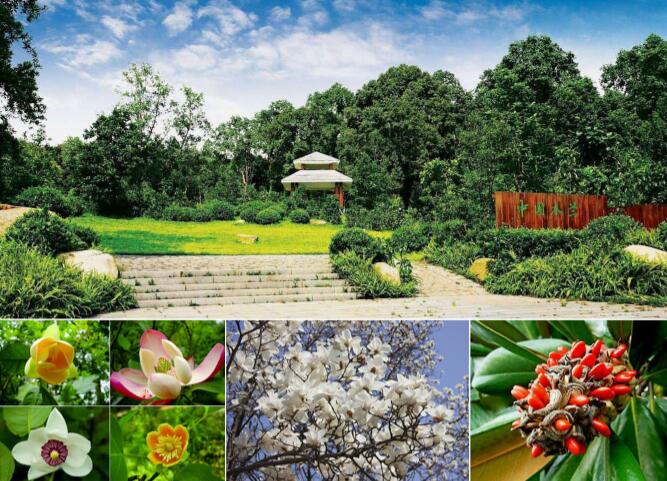As a basal angiosperm family, Magnoliaceae is extraordinary important for studying the evolution of flowering plants from phylogenetic and geographical perspectives. However, the ecophysiological adaptation underlying their divergent evolution and geographical pattern is unclear.
During recent three years, Dr. Hui Liu et al. from Plant Water Relation Group (PI: Dr. Qing Ye) of Ecological and Environmental Center, South China Botanical Garden, have reported a series of new findings on the evolution and ecophysiology of Magnoliaceae species: 1) After comparing four phylogenetic-geographic models on plant traits and environmental variables of 183 Magnoliaceae species in China, phylogenetic niche conservatism (PNC) was identified in most of the studied plant traits across the Magnoliaceae, while environmental variables showed weak phylogenetic signals, but strong spatial signals. This suggests that the present tropical-temperate distribution pattern of the Magnoliaceae is driven by the ecophysiological adaptation of plant traits under both geographical separation and environmental constraints. 2) By measuring photosynthetic and hydraulic traits of species from the four largest Magnoliaceae lineages, PNC in water-conducting and nutrient-use related traits was identified. This elucidated the regulation of hydraulic and photosynthetic processes in the temperate-tropical adaptations for Magnoliaceae species under a clear divergent evolution. Further studies on the ecophysiology of common species from two climatic regions, and seasonal changes of two closely related lineages of Magnoliaceae, all supported the different adaptation strategies of divergent lineages. 3) To explore the ecophysiological basis underpinning flowers and leaves, hydraulic and morphological traits and sap flow in flowers and leaves from the same branches of two Magnoliaceae species that flower before leaf emergence were measured. Results revealed that Magnolia leaves maintained high transpiration rates through efficient stomatal responses to environmental changes, while Magnolia flowers retained more hydrated tepals by exhibiting less water loss than leaves via lower hydraulic conductance, therefore could maintain sufficiently high water potential to sustain hydraulic safety.
This systematic work is funded by the National Natural Science Foundation of China, and results have been published in several scientific journals: Scientific Reports (2015, 5, 12246), Journal of Biogeography (2016, 43, 1179-1191), Plant Ecology (2017, 218,407-415), Functional Plant Biology (2017, 44,1098-1110) and Journal of Plant Ecology (2017, online), with links:
http://www.nature.com/articles/srep12246
http://onlinelibrary.wiley.com/doi/10.1111/jbi.12707/full
http://dx.doi.org/10.1007/s11258-017-0699-9
https://doi.org/10.1071/FP16429
https://doi.org/10.1093/jpe/rtx011

Fig. 1 Magnoliaceae Garden in South China Botanical Garden, with flowers and fruits of several typical Magnoliaceae species
